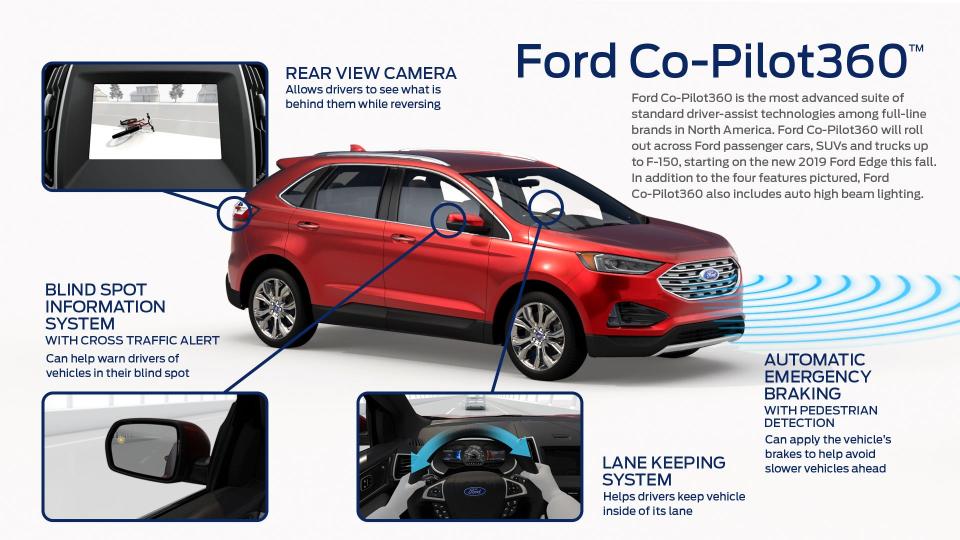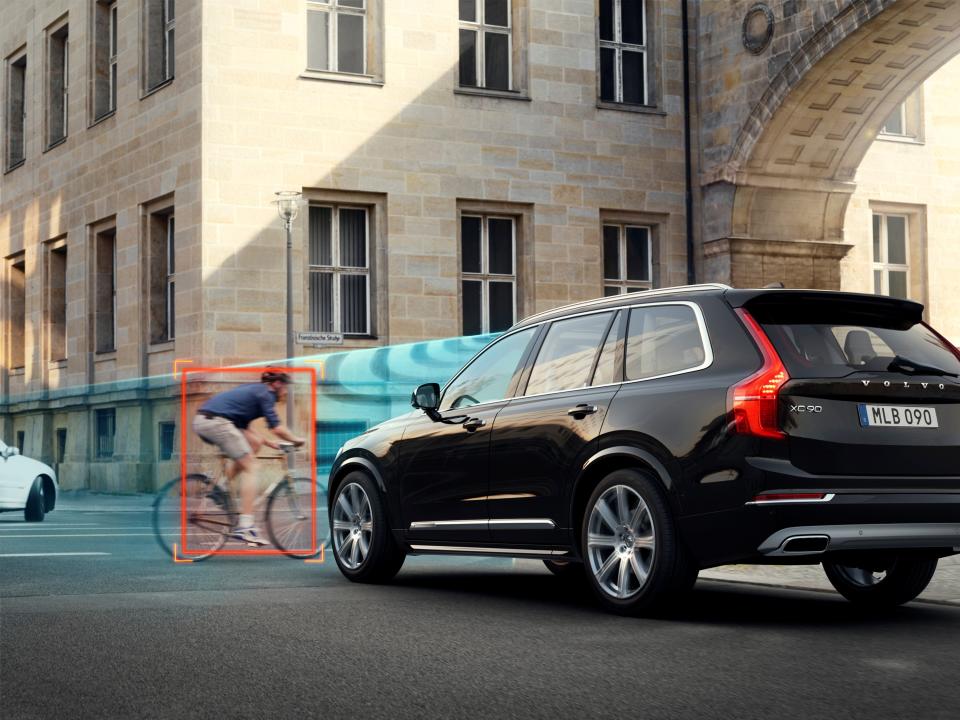Simpler names coming for vehicle safety features
Many drivers have no idea which safety systems their cars have or what they can do because of a confusing muddle of names automakers use. Buyers want to be safe, frequently paying thousands of dollars for optional advanced driver assistance systems, or ADAS, but the lack of standard names makes it hard to compare vehicles.
“ADAS features are increasingly common, but there’s lots of misinformation based on names that don’t make their purpose or function clear,” said Greg Bannon, AAA's director of automotive engineering and industry relations.
According to AAA, automakers use 20 different names for adaptive cruise control, which uses radar and other sensors to automatically maintain distance from the vehicle ahead, accelerate and brake on the highway. There are 40 different names for automatic emergency braking, which slows or stops a vehicle without the driver’s intervention when a collision is inevitable.

The profusion of names – some reasonably intuitive, others as spacey as “Distronic” –can lead people to overestimate their vehicle’s capabilities. I get emails from people who think help staying in their lanes means their car can drive itself. IT DOESN'T. Keep your hands on the wheel.
Automakers, Consumer Reports, AAA, JD Power, the National Safety Council, the U.S. Department of Transportation and the Society of Automotive Engineers are working to end the confusion.
Election 2020: How the Democratic candidates could shape college costs, family finances
National Pancake Day: Get free pancakes Tuesday and enter 'Pancakes for Life' contest
Distron-what?
AAA says 30.8% of 2018 model vehicles sold have automatic emergency braking, 13.9% lane keeping assist and 11.8% adaptive cruise control – which Mercedes calls Distronic, in case you were still wondering about that one.
The different names – frequently trademarked – arise from marketers’ desire to make their systems sound unique and because engineers didn’t compare notes when developing them.
It’s virtually impossible to keep them straight.
“Many manufactures use the same names to describe different things,” said Kelly Funkhouser, Consumer Reports’ head of connected and automated vehicle testing. Consumer Reports surveyed 72,000 people on the issue last year.
“We heard from consumers who did their research but couldn’t communicate with the salesperson because the automaker used different terms,” Funkhouser said. “They left the dealership with cars that didn’t have the safety features they expected.”
The list of safety and driver assistance features on price sheets for vehicles I’ve tested includes these terms: ASCC, active emergency stop assist, lane keeping assist & lane following assist, LFA, DAW, BCA and HVA. I couldn’t swear exactly what any of them mean without looking it up – and I do this for a living.
What hope do you have if you shop for a car every four to five years and just want to be sure your family is safe?
The solution is near
“It’s important that when a customer hears a system’s name, they understand what it does,” said Chad Zagorski, GM safety and driver assistance lead engineer and chair of the Society of Automotive Engineers’ task force on safety system standards and names. The task force includes automakers and the groups that called for the standards. A list of terms they agreed on is making the rounds for approval. They could be in use soon.

The standard won’t keep automakers from trademarking the packages in which they offer safety systems. The goal is to use common terms everyone can understand for the basic feature, and allow manufacturers to explain what makes their version special, including names such as Toyota’s TSS-P, Subaru’s EyeSight and Volvo City Safety.
“We need to have a solid foundation, so manufacturers can sell the features and consumers are sure of what they’re getting,” Funkhouser said.
Contact Mark Phelan at 313-222-6731 or mmphelan@freepress.com. Follow him on Twitter @mark_phelan. Read more on autos and sign up for our autos newsletter.
Suggested standard names for safety and driver assistance features
Driving Control Assistance
• Adaptive cruise control: Assists with acceleration and/or braking to maintain a prescribed distance between a vehicle and the car in front. Some systems can make a vehicle come to a stop, then continue.
• Active driving assistance: Assists with vehicle acceleration, braking and steering. Some systems are limited to specific driving conditions. The driver is responsible for the primary task of driving.
• Lane keeping assistance: Assists with steering to keep a vehicle within its driving lane.
Collision Warnings
• Blind spot warning: Detects vehicles to the rear of a car in adjacent lanes and alerts the driver to their presence.
• Forward collision warning: Detects an impending collision with a vehicle in front and alerts the driver. Some systems include pedestrian or other object detection.
• Lane departure warning: Monitors a vehicle’s position in its lane and alerts the driver as the vehicle approaches or crosses lane markers.
• Parking obstruction warning: Detects obstructions near a vehicle during parking maneuvers.
• Rear cross traffic warning: Detects vehicles approaching from the side and rear of a vehicle as it moves in reverse, and alerts the driver.
Collision Intervention
• Automatic emergency braking: Detects potential collisions while the car is traveling forward, provides a warning and automatically applies the brakes to avoid or lessen the severity of an impact. Some systems have pedestrian or other object detection.
• Automatic emergency steering: Detects a potential collision and automatically steers to avoid or lessen the severity of the impact. Some systems include pedestrian or other object detection.
• Rear automatic braking: Detects a potential collision while a car is moving in reverse and automatically applies the brakes to avoid or lessen the severity of an impact. Some systems include pedestrian or other object detection.
Parking Assistance
• Active parking assistance: Controls steering and potentially other functions during parking. The driver may be responsible for acceleration, braking and gear position. Some systems are capable of parallel and/or perpendicular parking.
• Remote parking: Parks a vehicle without the driver being inside. Automatically controls acceleration, braking, steering and shifting.
Other Driver Assistance Systems
• Automatic high beams: Switches between high- and low-beam headlamps automatically based on lighting, surroundings and traffic.
• Backup camera: Provides a view of the area behind a vehicle when in reverse. Sometimes includes trailer assistance, a system that assists drivers when backing up with a trailer attached.
• Driver monitoring: Monitors drivers to determine whether they’re actively engaged in the task of driving. Some systems monitor their eye movement and head position.
• Head-up display: Projects an image of vehicle data and/or navigational info into the driver’s forward line of sight.
• Night vision: Aids a driver’s vision at night by projecting enhanced images on the instrument cluster or head-up display.
• Surround-view camera: Uses cameras to provide a 360-degree on-screen view of the immediate surroundings.
Source: Consumer Reports
This article originally appeared on Detroit Free Press: Simpler names for car safety features are on the way

